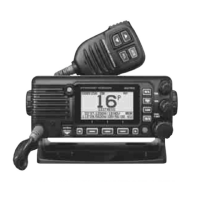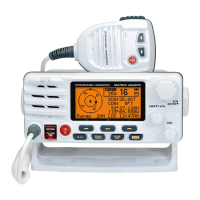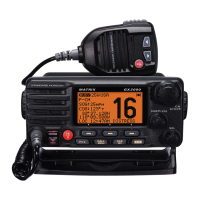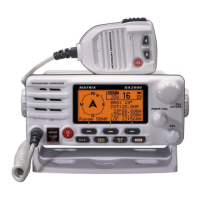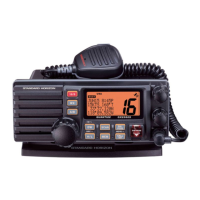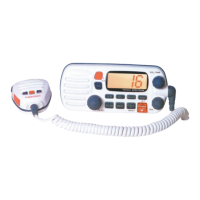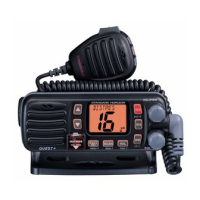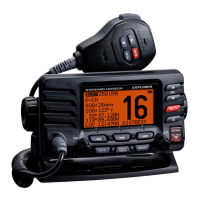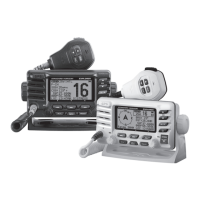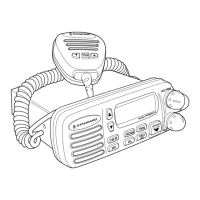z International ITU-R M.493-15 Class D DSC (Digital Selective Calling)
z Integrated dual channel AIS (Automatic Identication System) receiver
z AIS/AIS SART target display: MMSI, Call Sign, Ship Name, BRG, DST, SOG and COG
z NMEA 2000 and NMEA0183 Compatible
z Integrated 66 Channel Internal GPS receiver
z Contact Class A or B AIS Ship with DSC
z Programmable CPA or TCPA collision avoidance alarms
z Submersible IPX8 (1.5 meter for 30 minutes)
z 80dB Commercial grade receiver
z DSC position request and report functions
z GM (Group Monitor) using DSC Group Position Calling
z Navigation (LAT/LON, SOG and COG) information shown on display
z MOB (Man Over-Board) Operation
z Versatile user-programmable scanning, priority scan and Dual/Triple Watch
z Integrated 32 Code Voice Scrambler and 4 Code Voice Scrambler
z 30 Watt PA/Loud Hailer with preprogrammed fog signals and listen back
z Noise canceling for both transmit and receive audio
z Second Station Remote Microphone
*
z Intercom Feature between Radio and Second Station Remote Microphone*
z ATIS Mode for European Inland Waterways (GX2400GPS/E only)
*(Optional SSM-70H (RAM4) or SSM-72H (RAM4X) required)
MATRIX NMEA2000 GPS
GX2400GPS
GX2400GPS/E
(
European Version
)
Owner’s Manual


